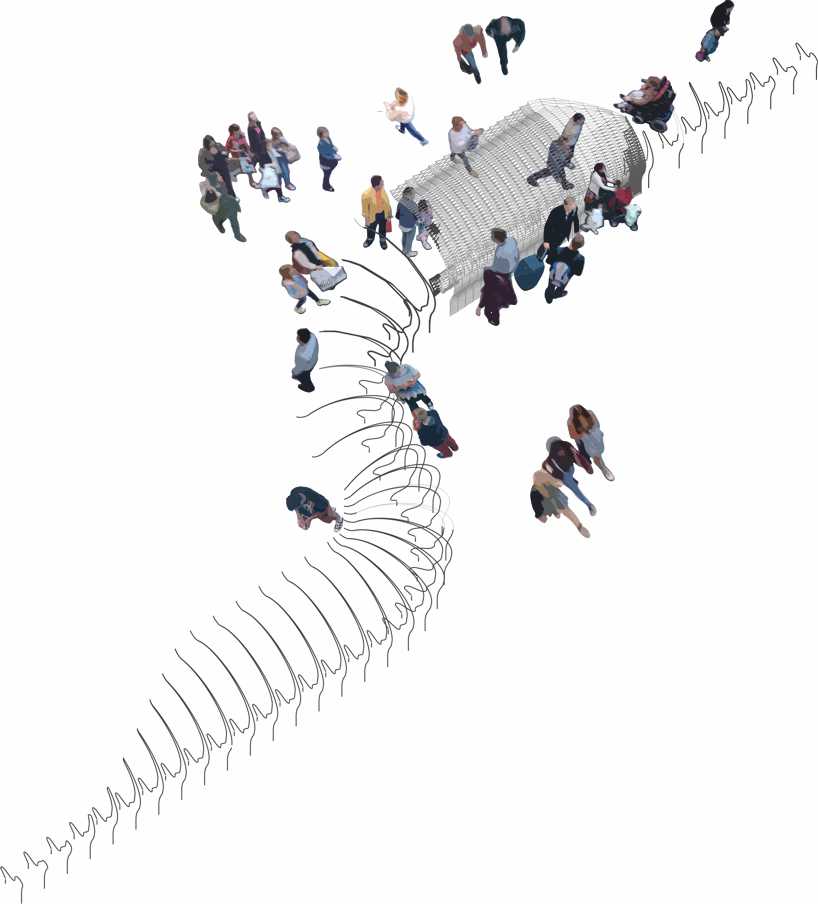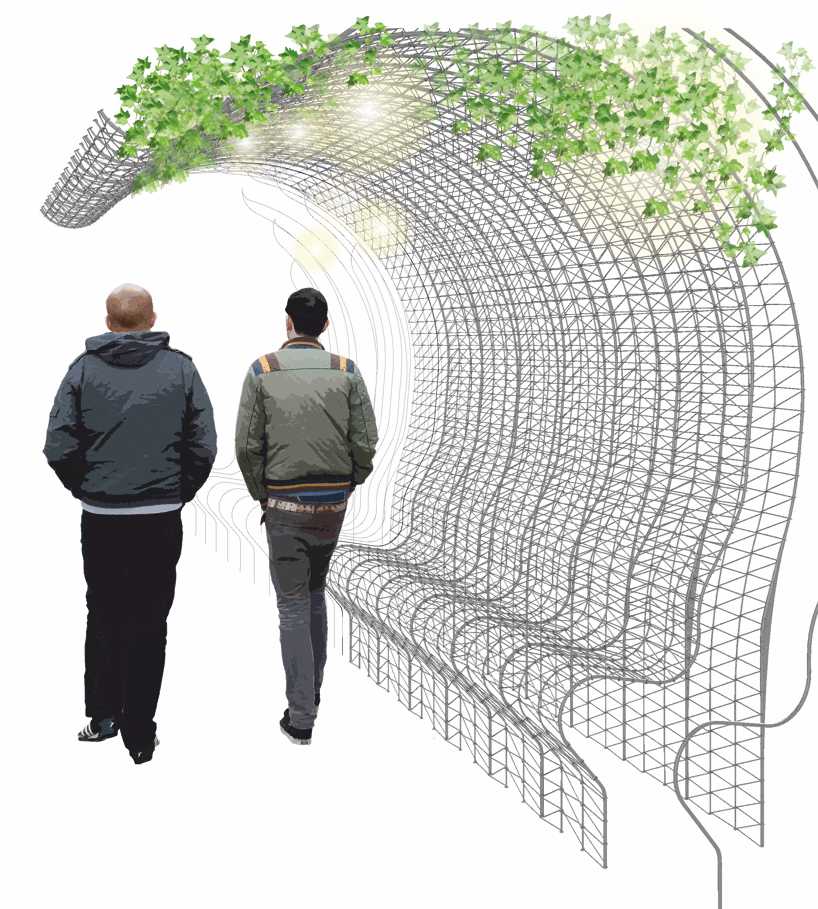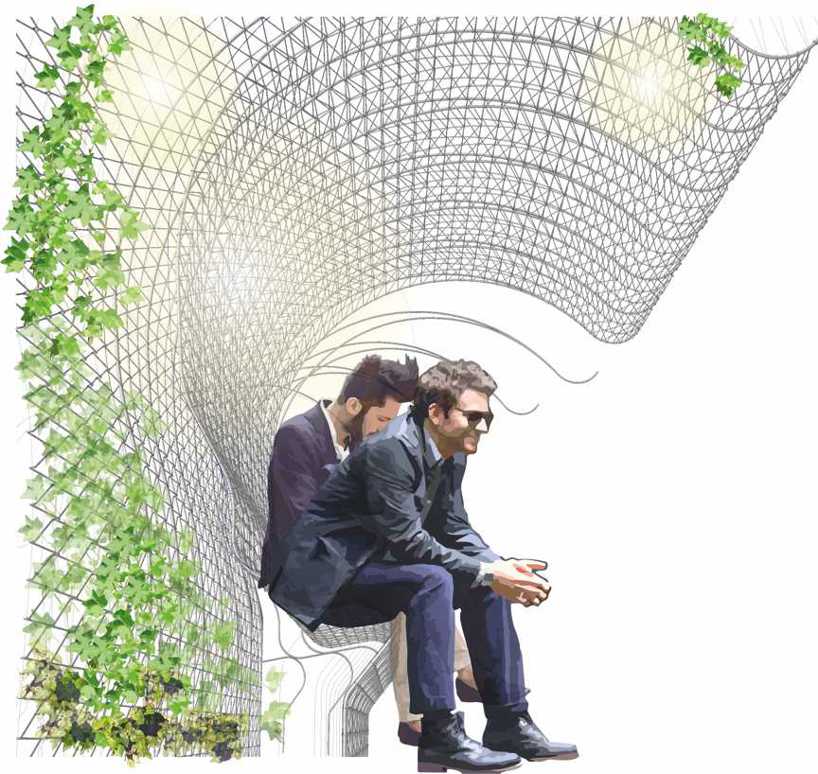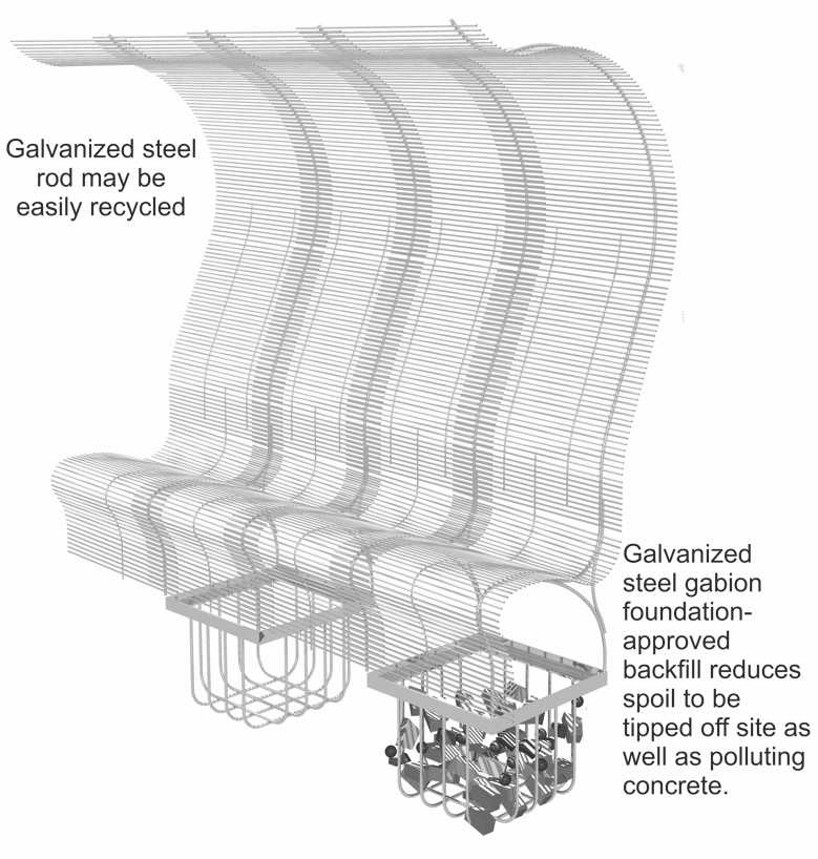
Weaving in Public by justin tunley from uk
designer's own words:
WEAVING IN PUBLIC.
Addressing our public environment, this design is concerned with a production concept for street furniture, rather than a single finite design. The precept is that with the advent of CNC production techniques, the need to be constrained by expensive tooling costs has passed, allowing designs that respond and interact with their habitats.
Industry standard CNC controlled 3D rod bending machines, close to the installation site, weave fluid forms. in modular sections, for ease of transport & handling on site. Elements such as fiber optic lighting & digital communication inks are woven into the designs weft. Visually light, with a translucent quality, pergolas, shelters, seating, dynamic signage etc would have a continuity, reducing the busy clutter of many of our public open spaces. The result is visually very light yet robust & impossible to graffiti. ‘Gabion basket’ foundations accept selective fill from site, rather than the usual mass concrete foundations. Environmentally this is significant, as every year many tons of concrete are used to conventionally secure street furniture. Concrete production is notorious for directly & indirectly releasing huge quantities of greenhouse gases into the environment- enough to make many Landscape Architect specifiers wince. Once a conventionally fixed piece of street furniture does reach the end of it’s life, it is not usually economical to re-locate or even re-cycle the raw materials. A basket foundation may me simply dug out by hand, & relocated. In the event of recycling, the galvanized finish may be melted off for re-use & the use of steel as a single base material greatly simplifies the process. The use of on site foundation materials also helps to touch the ground lightly by reducing the need to cart many tons of spoil to approved tipping sites. The flexible modular nature of the technique, combined with the CAD- CAM production method will allow assembled pieces to be readily altered, in the event of unforeseen changes in the pieces environment. Countless organic forms may be produced with this technique, raising the intriguing prospect of allowing architects & landscape architects to interweave external & internal spaces.
Ariel view- typical installation
Pergola seating
Seating
General Assembly, showing basket foundation